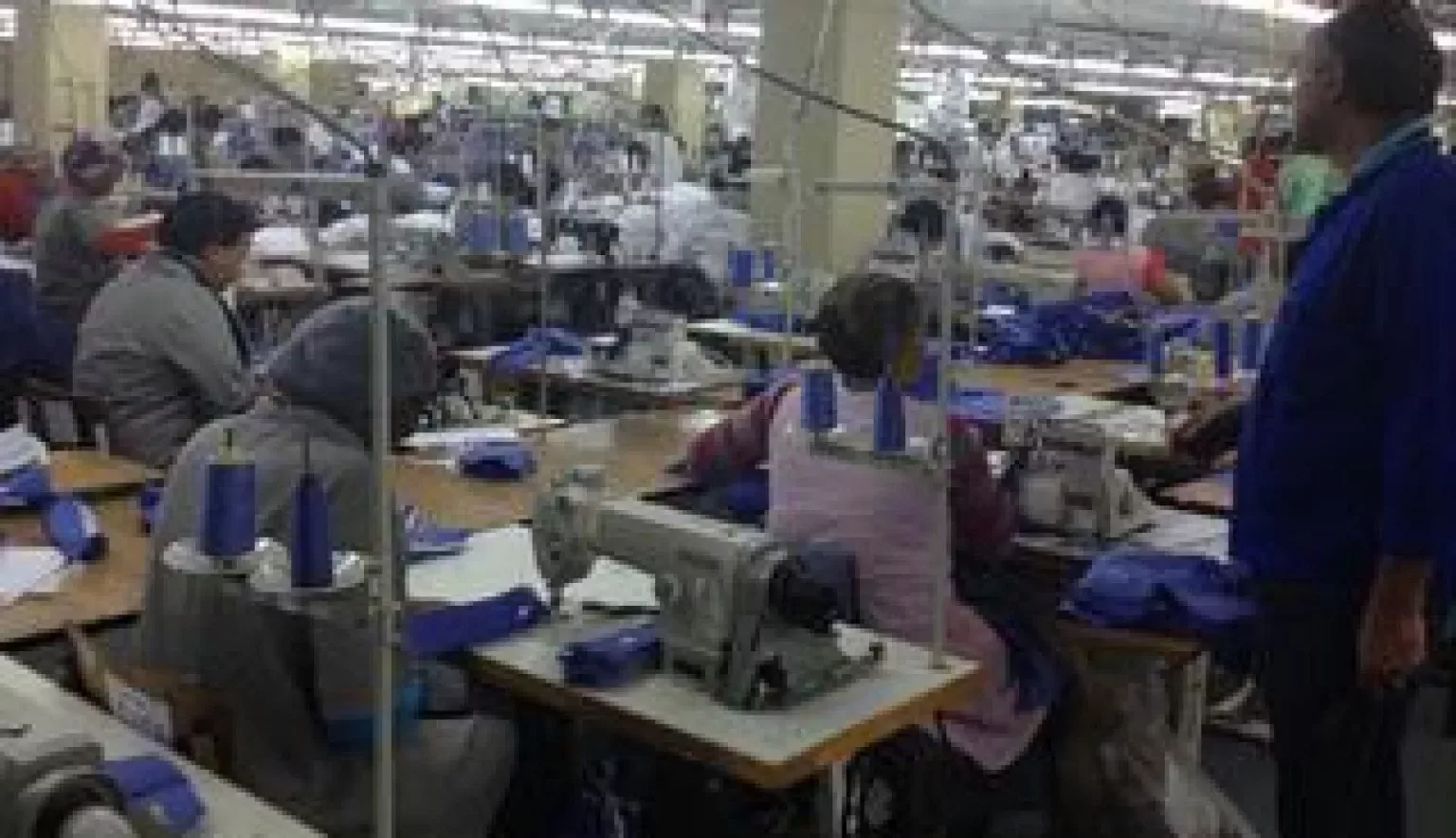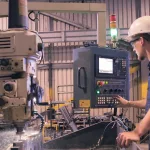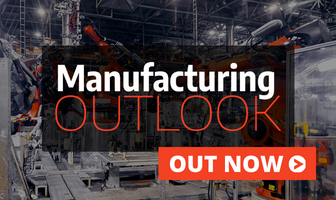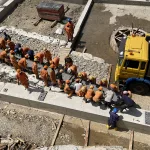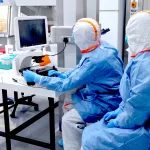For more than 40 years, Pep Clothing, the manufacturing division of Pepkor, has been clothing South Africa. the company has been dedicated to providing every variety of high quality apparel.
THE FABRIC OF A COMMUNITY
“We’re more than 40 years old,” boasts Marthie Raphael, Pep Clothing’s general manager. “the first factory operated in KwaZulu- Natal, and we soon founded another division in Cape Town. 25 years ago we moved both of those divisions into one building. Over the years we’ve done many different clothing items. We’ve been a school uniform factory, we’ve had limited fashion exposure, we’ve provided socks, blankets, underwear and stockings. However, over time many of those divisions have been relocated and sold, leaving us specialising in school uniforms.”
Raphael knows what she’s talking about, she’s been with the company for a while, and has worked her way up through the business, seeing it from every perspective.
“My very first job was with the factory in 1993,” Raphael tells us. “I worked as a quality engineer, then moved to Malawi, first for the group, then left to work for a local company for four years before returning to Pep Stores and from there moved back into the manufacturing side of the business again, where I moved up through the ranks. I’ve now held this position for six years.”
Throughout its 40 years Pep Clothing has built its reputation on
one foundation – consistent quality. “The consistent quality of our clothing, trouser after trouser and shirt after shirt, has always been our unique selling point,” Raphael insists. “We provide school clothing of a high standard, we supply two leading brands, and with school uniforms quality is paramount because it will be passed down for years.”
That quality is all the more essential because Pep Clothing is competing in a market awash with cheap, low quality products.
“What happens with many of the imported products on the market is that year after year you will not get consistent quality and colour continuity,” Raphael explains. “We can achieve that quality because we have an in house laboratory that tests all our products to destruction before they reach the shops, as well as a long established quality system which monitors quality from the source of our raw material supplies, to the delivery to our customers.”
Competing on quality alone is always a challenging proposal, especially when on all sides you are being undercut on price.
“There are certainly areas in the industry that show growth, especially if you can off er superior quality to the cheaper imports, but the main challenge remains the cost of the raw materials we need. We’ve seen some job losses in the industry as a result of that,” Raphael says.
But in the long run it’s a strategy that has always worked for Pep Clothing, and continues to do so today.
“Over the last year we’ve outperformed our operational and financial budgets,” Raphael says. “We operate on a break even model where profits go right back to the customer. We’ve been performing higher than our targets, we’ve brought staff turnover down, absenteeism is low and our financial targets are being met. That being said, we have to continuously improve our offering to our customers in terms of value, as superior quality alone will not keep any business afloat.”
Even now, the business is working on making their facilities bigger and better, providing higher volumes than before.
“We’re in the process of renovating the whole factory and building,” Raphael tells us. “the entire site is being renovated. we have redesigned the factory layout to improve process flow. We are moving each of our four factories to a temporary area while we relay the factory according to our new line layouts. The first phase is already halfway down the line and we expect to finish the project in 12 to 13 months, improving our efficiencies and health and safety standards, as well as replacing our light fittings with more environmentally friendly alternatives. once the refurbishing is done, we’ll reintroduce shifts and expand our capacity.”
Constructing new facilities is only part of Pep Clothing’s ongoing projects for improvement however. Another crucial facet they are working on is improving efficiencies and effectiveness throughout the entire operation.
“Last year we improved our productivity by one percentage point, lowered absenteeism by three percent, with the lowest labour turnover we’ve seen in seven years,” Raphael says. “This is thanks to a combination of the way we treat our employees, an organisational change to create a safe environment to work in, as well as providing extra support that’s necessary because many of our employees come from difficult backgrounds. By providing a safe, supportive environment, we’re able to ensure that our employees don’t leave us as they appreciate our wide array of wellness and leadership programmes.”
This is only the beginning as far as Raphael is concerned. She strongly believes in the ongoing improvement of the business.
“We still need to improve absenteeism and productivity,” she admits. “It remains a challenge during the winter months due to excessive rain and flooding. The biggest measure we’re introducing will be having assistance programmes for employees to put them in touch with government departments that can assist them, as well as introducing an attendance bonus, and more initiatives to bring services in house. For instance we have a full Employee Assistance programme offering training, education and several other services to our employees.”
This is about more than having a series of schemes that pay lip service to staff support however, Raphael emphases that all of these efforts are just symptomatic of a corporate culture that really cares about its people.
“I think what’s very important to me is our organisational culture, treating everyone with dignity and respect,” she says. “The initiatives we run are quite unique for a large South African clothing manufacturer. These initiatives include full occupational and primary healthcare, as well as social workers on site. We run debt counselling sessions, a large number of training programmes for our employees and the ultimate cherry on the cake for us is knowing we can help our employees’ families and communities.”

